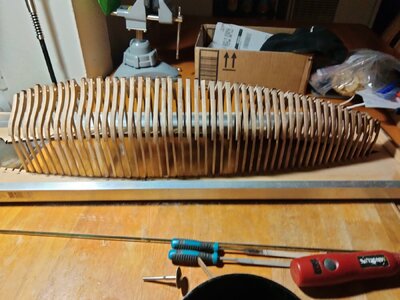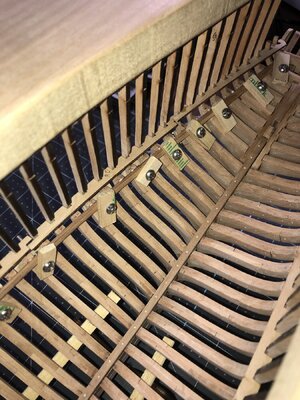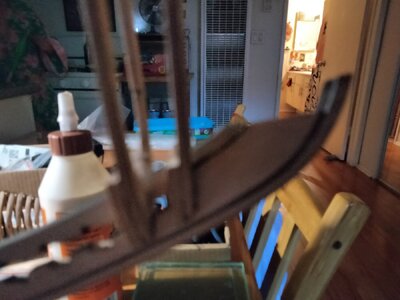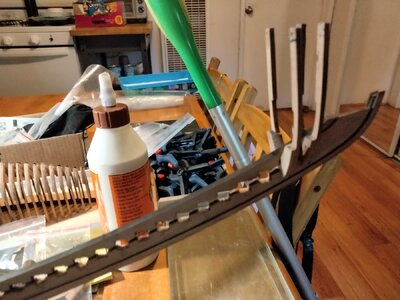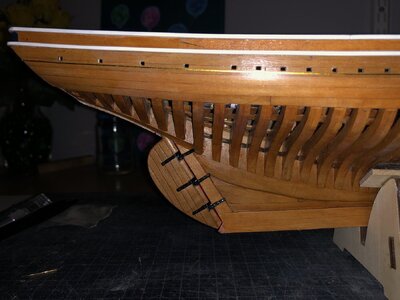In this post in my build-log I described how I did it:I have a big question. I'm filing the frames to fit the keel. So far this connection has been kept really tight. Now I'm wondering how I'm going to get the frames in one by one with the keel inverted. My current thinking is to complete the frame building/fitting process and then go back and make the connection looser. I don't know how loose and still keep tolerances. I still have to make the marks shown on the individual frame plans
Please advise if in totally off track.
Installing Frames <— Click
But please look in the other build-logs to find the method you feel comfortable with.
By lifting the jig a bit, be sure the top of the frames are always at the same level of the under side of the jig-plate.
(Consider what it would be like if the plate lay flat on the surface and you could not push the frames down far.)
Regards, Peter
Last edited:




